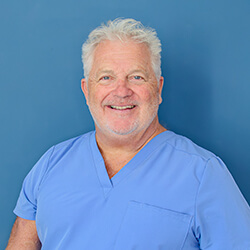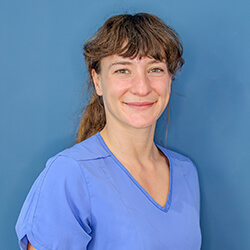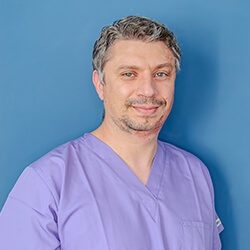
The hip and groin are located where your upper thigh meets your lower abdomen, with your hip joint positioned along the same line beneath it. Hip and groin pain often occur together, but you may experience one without the other depending on the underlying cause. Hip pain can often occur in the buttock and refer to the thigh.
Pain in this area can be sharp or dull, sudden or gradual, and may vary in severity based on the condition affecting you. Movement of the leg upwards or rotation can increase the pain. While over-the-counter pain relief can help temporarily, it’s important to address the root cause to prevent ongoing discomfort and pain
At The House Clinics Bristol, our experienced Chiropractors, Physiotherapists, and Massage Therapists specialise in diagnosing and treating hip and groin pain. We have a clinic in Redland and in the City Centre. We create personalised hands on treatment plans to relieve pain, restore mobility, and support your long-term recovery.
What is Osteoarthritis of the Hip?
As we get older, the cartilage that allows the bones of the hip joint to glide smoothly can gradually wear away. When this happens, the exposed bone surfaces begin to rub against each other, leading to osteoarthritis.
The result is pain in the joint that often feels constant and is accompanied by pain and stiffness in the hip, buttock and groin. Some people also notice grinding, clicking, or reduced movement in the hip. Typically, the pain eases with rest but worsens with activity, walking, or prolonged standing.
Our team at The House Clinics, Bristol, specialise in hip pain treatment, helping patients with osteoarthritis manage pain, improve movement, and stay active.Treatment often begins with a chiropractor or physiotherapist to mobilise the hip joint and restore flexibility. A tailored exercise programme can help strengthen and stretch the muscles around the hip, reducing strain and supporting the joint. In the short term, anti-inflammatory medication may be recommended to ease discomfort, and where weight is a contributing factor, weight loss can make a significant difference to both pain and long-term mobility.
What is Groin Strain?
A groin strain occurs when one or more of the muscles that connect your pelvis to your upper leg (femur) are overstretched or torn the adductor muscles. This injury causes inflammation and pain, and it often happens during sports, particularly while running, kicking, or suddenly changing direction. It is common in football and rugby players. The severity can range from a mild strain with minimal strength loss to a more serious tear that significantly limits movement.
The pain of a groin strain usually comes on suddenly and worsens with movement. It may be aggravated when you stretch your groin, tighten your thigh, pull your legs together, or draw your knees towards your chest. Muscle spasms are common, and bruising or swelling can appear in the groin or upper thigh. Your hip’s range of motion may feel reduced, your leg may feel weak, and in more severe cases, standing or walking can be difficult.
The House Clinics Bristol, treat groin strain. Typically it involves adjustment to the pelvic joints (Sacro-iliac joints) hands-on deep tissue massage combined with a tailored exercise programme to stretch, strengthen, and stabilise the area. Proprioceptive/balance exercises to improve control, as well as techniques such as deep tissue massage, ultrasound therapy, interferential treatment, or dry needling, may also be recommended to speed recovery.
What is Hip Bursitis? (trochanteric bursitis)
Bursitis happens when one of the fluid-filled sacs in the hip, called bursae, becomes inflamed. These sacs normally act as cushions to reduce friction between tendons and bone, but if they are irritated, often through repetitive movements or running or walking on uneven ground, they can become swollen and painful.
The most common type is trochanteric bursitis, which affects the bursa on the outer side of the hip, although the iliopsoas bursa at the front of the hip can also be involved.
If you have bursitis, you’ll usually feel a sharp pain on the outside of the hip, which worsens with activity, prolonged standing, or when lying on the affected side. In some cases, the pain can be severe enough to disturb sleep or limit mobility.
At The House Clinics in Bristol, treatment for bursitis could include Physiotherapy or Chiropractic, massage therapy, electrotherapy acupuncture to reduce inflammation, ease pain, and restore movement.
What is Tendonitis of the Hip?
Tendonitis occurs when a tendon (the tissue that connects muscle to bone) becomes inflamed, usually through overuse of the muscle. Because the hip tendons attach between the hip bone and the groin muscles, pain may start in the hip and sometimes radiate into the groin.
The pain from tendonitis usually has a gradual onset. It tends to worsen with activity such as walking, running, or climbing stairs, and improves with rest.
The House Clinics, Bristol offer specialist treatment for hip tendonitis, combining hands-on therapies and exercise-based rehabilitation to promote long-term recovery. Treatment is often conservative. Hands-on sports massage techniques, ultrasound, interferential electrotherapy or dry needling may be recommended, this is given alongside a tailored exercise programme to restore flexibility and strengthen the surrounding muscles.
What is a Labral Tear?
The labrum is a cartilage that cushions and supports the outer edge of the hip socket. A tear can develop for different reasons, it follows a traumatic injury, sometimes from repetitive overuse, and in many cases it is linked to a condition called femoroacetabular impingement (FAI), where the ball and socket of the hip don’t fit together perfectly.
What is a Labral Tear symptoms?
If you have a labral tear, you may notice dull or sharp groin pain that gets worse with activity, weight-bearing, or when you straighten your leg. Many patients also describe hearing or feeling clicks, pops, or catches in the joint, and in some cases the hip may feel weak or unstable.
What is a Labral Tear treatment?
At The House Clinics in Bristol, we provide expert care for labral tears, offering diagnosis, tailored physiotherapy, and ongoing support to help you recover mobility and reduce pain. In the early stages, treatment is usually conservative. This might include physiotherapy to mobilise the joint, improve hip alignment, and strengthen the supporting muscles. Rest and anti-inflammatory medication can also help reduce irritation. If your symptoms don’t improve with these measures, your specialist may recommend arthroscopic surgery to permanently repair the torn labrum.
Femoroacetabular impingement is a condition where there is abnormal contact between the two bones of the hip joint, the rim of the acetabulum (hip socket) and the femoral head-neck junction (just below the ball of the thigh bone). With hip movement, this contact creates friction that pinches the soft tissue and irritates the joint, leading to pain and reduced activity. In most cases, it develops because of abnormal bone growth during childhood, which causes the hip joint to fit together imperfectly.
The pain from FAI usually gets worse after sitting for long periods, standing for too long, or with movements such as getting out of a car. Over time, this irritation can also limit how far you are able to move your hip.
At our Bristol hip pain clinic, treatment for FAI may involve Physiotherapy, Chiropractic adjustments, and exercise programmes to improve hip alignment and mobility. In severe cases, surgical intervention may be advised.
What is a Hip Stress Fracture or True Fracture?
A hip stress fracture develops when the bones of the hip joint gradually weaken through repetitive movements, such as long-distance running. If it isn’t diagnosed and managed early, it can progress into a true fracture. A break in the upper part of the femur (thigh bone) can also happen after a heavy impact, such as a fall, or when the bone is weakened by osteoporosis. Because osteoporosis makes bones more fragile, hip fractures are especially common in older women.
Breaking a bone in your hip is usually very painful, with symptoms worsening if you try to move your leg or put weight on it.
At The House Clinics, our Bristol chiropractors and physiotherapists support patients through rehabilitation after hip surgery, guiding you safely back to mobility and everyday activity. Referral Orthopaedic opinion. - This type of injury is always considered a medical emergency, and surgery is often required to repair or replace the damaged joint. After surgery, physiotherapy plays a vital role in helping you regain strength, restore mobility, and return to everyday activities safely. A tailored, long-term rehabilitation programme can make a significant difference to recovery outcomes.
Avascular necrosis occurs when the top of the femur (thigh bone) does not receive enough blood supply, causing the bone tissue to die. Because dead bone is weak, it can collapse or break easily. AVN is often linked with hip arthritis, but it can also develop after trauma or injury to the joint.
Symptoms usually include a severe, constant ache or throbbing pain in the hip and groin, which becomes worse when standing or moving. As the condition progresses, mobility is reduced and everyday activities may become increasingly difficult.
At The House Clinics in Bristol, we provide expert assessment and onward referral where surgery may be needed, alongside pre- and post-surgical rehabilitation programmes to support recovery. When avascular necrosis affects the hip, the most common treatment is hip replacement surgery to restore function and relieve pain.
If you’re suffering with hip and groin pain, don’t wait. Book your consultation today and start your recovery with our expert team.






Secure your appointments instantly or get tailored advice from a practitioner before booking, we’ll call you back at a time that suits you
Book Online
Hip Bursitis is a painful injury of the hip joint commonly affecting active walkers, runners and cyclists. The good news is that it is easily treatable...